Worlds most beautiful animal you have never seen before!
 Dec 25, 2019 • 6:19 AM UTC
Dec 25, 2019 • 6:19 AM UTC United States
United States 140x Magnification
140x Magnification Microorganisms
Microorganisms
Manu Prakash
I am a faculty at Stanford and run the Prakash Lab at Department of Bioengineering at Stanford University. Foldscope community is at the heart of our Frugal Science movement - and I can not tell you how proud I am of this community and grassroots movement. Find our work here: http://prakashlab.stanford.edu
266posts
1192comments
42locations
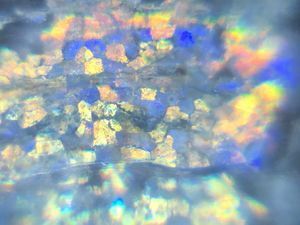
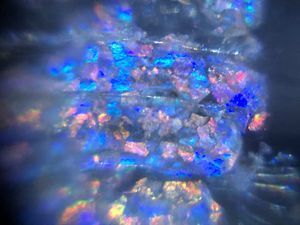
Every animal (and single cell) in its own right is beautiful because of the delicate balance between animate and in-animate matter it maintains. Life itself is a thing incredible beauty and joy.
But this Christmas; I want to introduce you to “officially” the worlds most beautiful animal you might have never seen! Of course I am talking about – Sapphirina – incredible copepod species. Very little is known about them (only males display these colors you are about to see).. and hence the attempt to capture their beauty and mystery in this post.
What if I told you there exists an animal that will appear and disappear right in front of your eyes. I thought I was hallucinating at first, when I lay my eyes on this tiny spec of dust – which seem to appear and disappear in the water. I had not slept for four days on my journey in North Pacific waters off the coast of Hawaii – so it was possible I was imagining things. I had been on a expedition at sea and although I was tiered, I was trying to keep it together.
But this Christmas; I want to introduce you to “officially” the worlds most beautiful animal you might have never seen! Of course I am talking about – Sapphirina – incredible copepod species. Very little is known about them (only males display these colors you are about to see).. and hence the attempt to capture their beauty and mystery in this post.
What if I told you there exists an animal that will appear and disappear right in front of your eyes. I thought I was hallucinating at first, when I lay my eyes on this tiny spec of dust – which seem to appear and disappear in the water. I had not slept for four days on my journey in North Pacific waters off the coast of Hawaii – so it was possible I was imagining things. I had been on a expedition at sea and although I was tiered, I was trying to keep it together.
In the last plankton tow in the middle of the night – I pulled a tiny creature that shines like nothing I have seen before!
We did many tows; and Blake’s tows down at 100m revealed abundance of these creatures. I will write a longer post on every thing we found in these tows!
We did many tows; and Blake’s tows down at 100m revealed abundance of these creatures. I will write a longer post on every thing we found in these tows!
First – it’s the vibrancy if colors. Second, the moment you are comfortable of its presence – it just disappears. Out of plane sight – and gone! And appear again.
Watch this video a 1000 times since thousands of unique species are dancing right in front of you. More on that soon – but let’s focus on sappharina’s. Notice the vibrancy flash of color from time to time (see sequence from 0:19 with the deep red spec rising in front of your eyes)..
Here it is after isolation.
Here it is after isolation.
As you would expect, I was finally able to isolate four sappharina and put them in a foldscope. What I saw was breadth taking and mesmerizing! An array of living mirrors so bright in color that mind went on a trip. Watch for yourself.
If you are wondering how I captured this with a Foldscope – you are at the right place. Foldscope can be used both as a bright-field – but less known – also as a dark field instrument. It’s simple to transition between the two; which is what I am doing in the above video; switching back and forth.
Take a look at the magnet you have assembled above your light module (this is what couples the light module to your foldscope). Usually you will slide this magnet on the light module to be aligned to the LED. This gives you bright field configuration. Simply slide further and mis-align this coupler to the LED just a little bit (Try different degree of mis-alignment to see what that does). This gives you darkfield images.
And you have a dark field image!
Some things are known about the brilliance of iridescence seen in the armor plates of this “brilliant” animal. This is not pigment – but in the category of structural color where nano-structures in the armor plates reflect specific wavelengths of light and absorb others. Since this reflection is incident angle dependent – the reflections change spectra with feeling of a vibrant color display! Some of the cross section TEM clearly show these nano structures (will post paper links and pdfs in comments below). But a lot of questions remaining – including – what the hell is this color for? I will write a longer post soon.
Keep exploring – happy new year and Christmas everyone!
Manu
ps: for anyone curious; here is the location of this particular sample, and below is the boat (kilo Moana) that made all this possible.
Take a look at the magnet you have assembled above your light module (this is what couples the light module to your foldscope). Usually you will slide this magnet on the light module to be aligned to the LED. This gives you bright field configuration. Simply slide further and mis-align this coupler to the LED just a little bit (Try different degree of mis-alignment to see what that does). This gives you darkfield images.
And you have a dark field image!
Some things are known about the brilliance of iridescence seen in the armor plates of this “brilliant” animal. This is not pigment – but in the category of structural color where nano-structures in the armor plates reflect specific wavelengths of light and absorb others. Since this reflection is incident angle dependent – the reflections change spectra with feeling of a vibrant color display! Some of the cross section TEM clearly show these nano structures (will post paper links and pdfs in comments below). But a lot of questions remaining – including – what the hell is this color for? I will write a longer post soon.
Keep exploring – happy new year and Christmas everyone!
Manu
ps: for anyone curious; here is the location of this particular sample, and below is the boat (kilo Moana) that made all this possible.
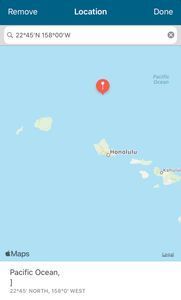

Update 1: here I am also adding light spectra as a function of depth in the ocean. The photic zone is 150m; with blue being the primary wavelength that makes it all the way down.
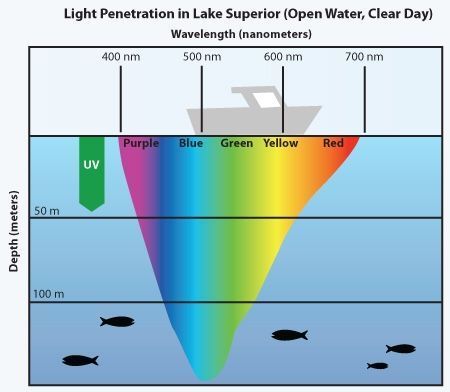
Image credit: https://manoa.hawaii.edu/exploringourfluidearth/physical/ocean-depths/light-ocean
Update 2: Here is a reference to TEM structure of the plates :
y Volume 119, , pp 205–210 |
Integumental ultrastructure and color patterns in the iridescent copepods of the family Sapphirinidae (Copepoda: Poecilostomatoida)
https://link.springer.com/article/10.1007%2FBF00349558#page-1
Update 2: Here is a reference to TEM structure of the plates :
y Volume 119, , pp 205–210 |
Integumental ultrastructure and color patterns in the iridescent copepods of the family Sapphirinidae (Copepoda: Poecilostomatoida)
https://link.springer.com/article/10.1007%2FBF00349558#page-1
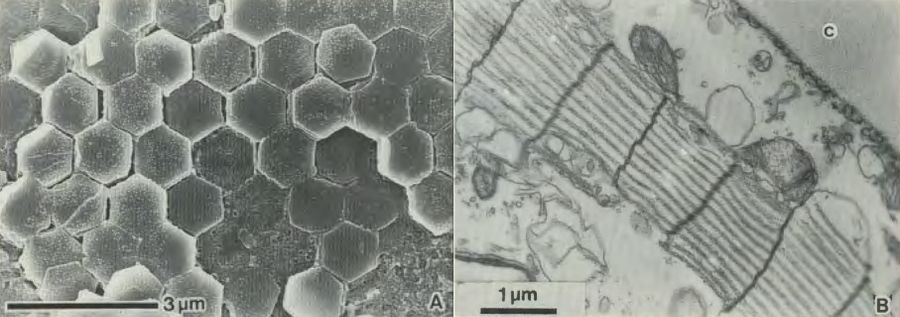
22.75 -158
Sign in to commentNobody has commented yet... Share your thoughts with the author and start the discussion!

 0 Applause
0 Applause 0 Comments
0 Comments
















